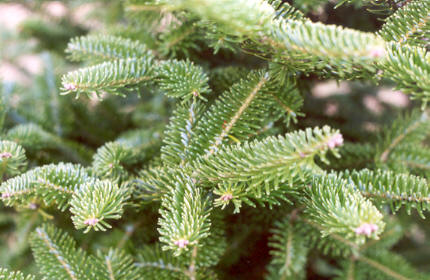
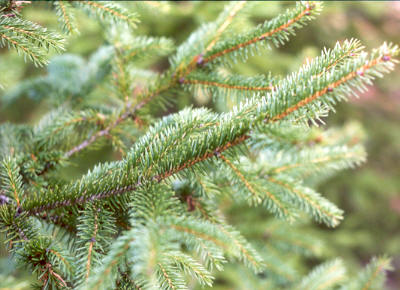
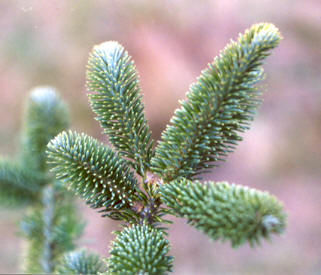
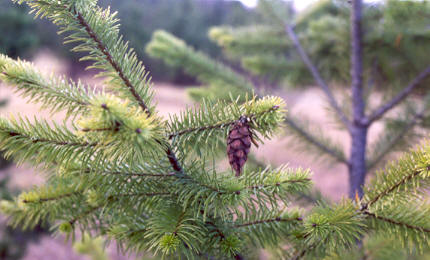
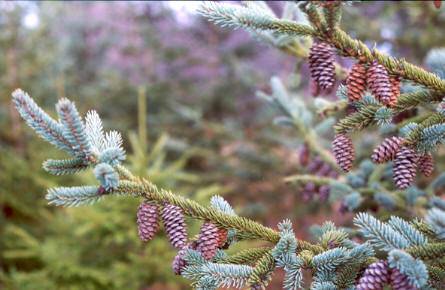
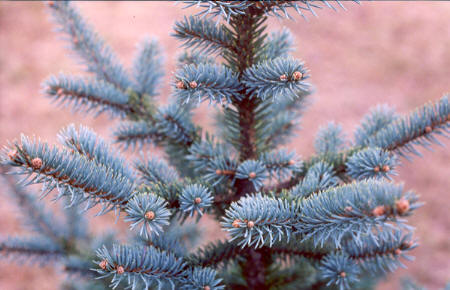
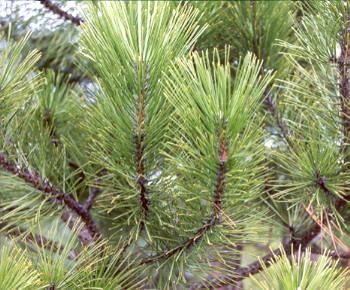
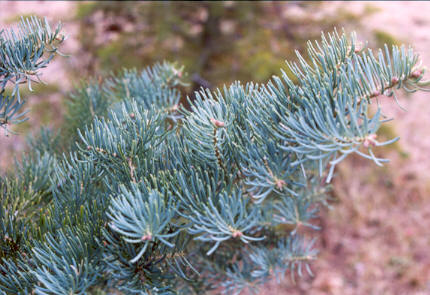
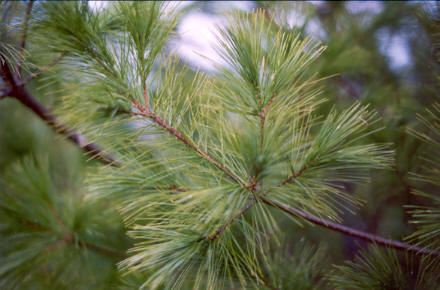
Christmas Tree Types
 | Balsam: The needles are 3/4" to 1-1/2" in length and are rounded at the tip. The underside of the needle has a silvery cast. The tree is named for the balsam or resin found in blisters on bark. The resin is used to make microscope slides, and was sold like chewing gum. It was also used to treat wounds in Civil War. These are the trees with the traditional Christmas Tree fragrance. |
 | Norway Spruce: The tree at the Rockefeller Center in 2001. Needles are 1/2" - 1" long and dark green. You can tell a Norway Spruce because the underside of the branch looks orange. |
 | Fraser Fir: The needles 1/2" to 1" long and surround the branch. Named for a botanist, John Fraser, who explored the southern Appalachians. |
 | Douglas Fir: The needles vary from being bluish to dark green and are 1" to 1-1/2" in length. When crushed, the needles give off a sweet scent. The tree is named after David Douglas who studied it in the 1800's. It is said that a Douglas Fir can live for a thousand years. Being "the exception which proves the rule," the cone of a Douglas Fir hangs down from the branch. For every other Fir, the rule is that the cone sits on top of the branch. |
 | White Spruce: The needles are 1/2" to 3/4" long and are green to bluish green in color. When crushed the needles have an unpleasant odor. The White Spruce is the State tree of South Dakota. |
 | Colorado Spruce: also known as the Blue Spruce because of the blue-green needles (not all Colorado Spruce have blue needles, but generally they do). It is the State tree of Utah and Colorado and can live in nature 600 to 800 years. |
 | Austrian Pine: Sometimes confused for a Scotch Pine, this has slightly longer needles (2" to 3"). |
 | Concolor Fir: The Concolor has long needles that are slightly blue-green in color (but may also be entirely green). |
 | White Pine: You know the pine you are looking at is the White Pine if it has five needles to a set (just like there are five letters in the word 'white'). It is the largest pine in United States and the State tree of Michigan and Maine. |